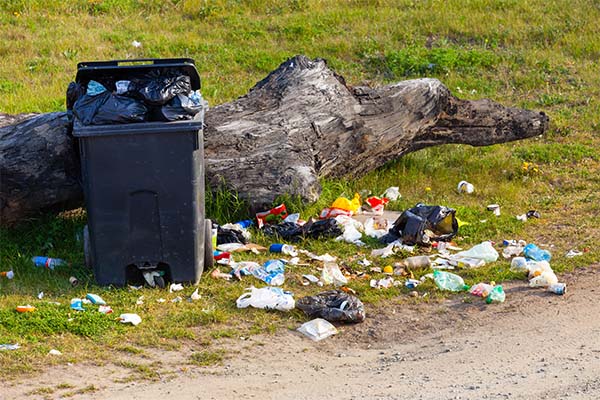Summer is well and truly underway in the northern part of the world. This means that many of us are taking advantage of the warm weather along with the easing of social distancing restrictions. While some are lucky enough to be jetting off on summer vacation, simply spending more time outdoors and meeting up in the local park is a top summer activity for others.
More people around the city, on the streets, in parks, and on beaches, inevitably means more waste and extra strain on local waste management. How does seasonal waste during the summer impact waste services? And how can smart waste technology help alleviate this burden and provide cleaner, trash-free environments for tourists and residents?
The Summer Means More Trash in Parks
In the US, many public departments are facing budget cuts in the face of the pandemic. In New York City, the Parks Department had its budget cut by almost USD 85 million in July 2020. The cuts forced the department to lay off 1,700 seasonal waste and maintenance employees – people who were usually tasked with maintaining and cleaning the city’s green areas. The result is heaps of trash piled up around parks, garbage strewn across grassy areas, and illegal dumping of large furniture. And that’s not to mention the 120% increase in citizen complaints about garbage.
But it’s not just the warm weather and arrival of summer that is to blame for the increase in overflowing waste. As the world slowly opens up again, parks are in ever-increasing demand as hotspots for social gatherings. People are enjoying their newfound freedom and meeting up more regularly. With limited location options, people are utilizing the green oases of the city for social gatherings. But many city parks are not equipped to handle these increases in visitors and the waste they leave behind. The need for trash cans in parks has spiked, with the demand outweighing the supply. This results in trash being piled high beside bins, or worse spread out across entire parks.
How did the City of San Francisco almost entirely eliminate sanitation complaints with smart waste technology? Find out in your free case story.
Tourists Overload Urban Waste Management
Waste management becomes a little more complicated in the height of summer when tourism waves hit major cities. Some cities receive a massive influx of tourists – sometimes as much as 10 times the native population. And more people = more waste.

The United Nations Environment Programme (UNEP) estimates that tourists generate 1-2kg of waste per day. Every summer in Europe, tourists cause a 40% increase in waste. This is not properly disposed of and ends up in the Mediterranean Sea. The surge in tourists to summer destinations combined with their lack of knowledge of differing waste systems leads to improper waste disposal and puts a huge strain on municipal waste management systems.
Combatting Seasonal Waste with Smart Waste Sensors
Dealing with unpredictable waste patterns calls for a new approach to waste management. Smart waste solutions empower municipalities to shift away from traditional ways of collecting waste and move towards dynamic collection services. They can say goodbye to waste collection based on fixed pickup routes and instead handle waste based on real-time data.
Smart sensors empower cities to monitor the fill levels of bins in their tourist hotspots. The technology provides in-depth insights into waste generation patterns in real-time. This means that cities can act quickly and efficiently when trash threatens to overflow into the streets. Smart waste cities can efficiently manage waste levels in their bins by using data analytics to predict surges of waste in summer hotspot areas – providing a cleaner environment for tourists and residents alike.
